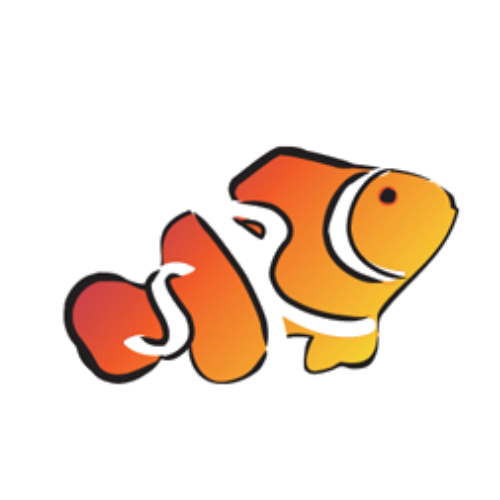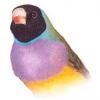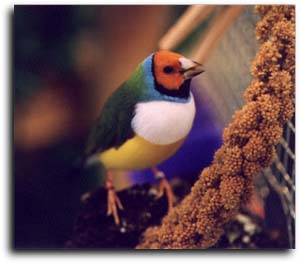-
Posts
5,969 -
Joined
-
Last visited
-
Days Won
3
Content Type
Profiles
Forums
Gallery
Everything posted by Gouldian
-
I only like the dog, I am not in love with it leh. People misunderstand how?????? Anyway that dog is known as a Boston Terrier, it was breed for the city of Boston's Apartment Lifestyles. So I guess it is one of the best dog to keep in HDB as opposed to the ever popular Jack Russell.
-
For me, Gouldian is the name of one of the most difficult pet I ever kept until Marine! Gouldian Finch, it is not really a difficult to keep bird once you get the hang of it, what is most difficult is breeding it. The furthest I ever gone is have clutches after clutches of un-fertilized eggs - did not dare to try Vaigra. Gouldian Finch is named by naturalist Sir John Gould dedicated to his wife thus the actual name should be Lady Gouldian Finch. He left England to Australia to document the wildlives and I guess he must have thought of he wife when he saw this bird. Anyway for those who are curious to how the Gouldian Finch looks like, you can either look at the logo of Viewsonic or the below photo. So why did I have a dog as my Avatar????? That will be answered in another episode. So Stay tuned.....
-
-
For me, I feed nightly as I have a colony of hungry Sun Corals to maintain. I have never tried cutting down on the feeding frequency. But I previously have tried every 3 days for my other tank with another Gonio. I noticed the growth is better with daily feeding. I dun target feed but just dose Zooplankton mixed with Cyclopeeze with some de-chorinated fresh water and slowly dose into the tank nightly after lights off. However, I always try to position my corals so that they more or less receive some attention from my PH.
-
This is not Goniopora but Alveopora, it is the hardier cousin. Notice it has 12 polyp tentacles as compared to 24 polyp tentacles of the Gonio.
-
They have been documented to feed on Zooplankton rather than Phyto. I personally have seen better response when I feed Zooplankton although I feel that Phytoplankton will indirectly feeds the Gonio since Phyto will increase the number of pods in the tank.
-
Dear all, just like to say that my Lubbocki was discovered dried up on my floor this afternoon after coming back from LFS. To all LFS owners and Sponsors who happens to see this thread; hope you guys bring in the Cirrhilabrus lubbocki. It is definitely and beautiful fish and the demand is definitely there. So please PM me if you have it.
-
Outstretch polyps, frilly polyps tentacles and lighter shades. When they are fed well, they will have a more full appearance and they body will be of darker shade as more zooplankton are stored in its body.
-
Bro looks like it is hungry. Have you been feeding zooplankton?
-
As long its stars can liao right. Me, I know nuts about stars. So did I made the wrong choice? So fast come back liao ah?
-
No worries. PM me anytime if you have
-
Still got brittle star???
-
I oso cannot afford Fiji LRs but when I saw them, I will always remember the texture, the colour and the shape.
-
Oh some more info, hope you guys don't mind me sharing. CONCLUSIONS For any given width, rotifers have a higher caloric content than Tigriopus nauplii. First-feeding fish eat- ing the smallest rotifers get twice as many calories per bite as they do eating Tigriopus nauplii of the same width (Table 2). Many first-feeding fish larvae select prey from the smallest size classes, yet older larvae eat prey belonging to all size classes. As a result, varia- tion in estimated daily consumption by larval fish may be caysed in part by the differences between the weight estimate for the average prey item and the actual weight of the item eaten. Clearly, an error in estimating food consumption can also result from ignoring specific differences in caloric content among prey organisms. Regressions of the width-weight measurements can be used to predict the dry weight of rotifers and nauplii of known width. The copepod width-weight model probably cannot be used for weights of calanoid life stages because calanoid nauplii are shaped more like an ellipsoid and thus would weigh more than dor- soventrally compressed harpacticoid nauplii of corre- sponding width. The copepod volume-weight model may be applicable to calanoid life stages. Source: GAIL H. THEILACKER AND AMY S. KIMBALL National Oceanic and Atmospheric Administration National Marine Fisheries Service Southwest Fisheries Center La Jolla, California 92038 http://www.calcofi.org/newhome/publication...r___Kimball.pdf
-
And a little on Rotifers as well. Although rotifers and ciliate protozoans are a small and generally uninteresting group to almost everyone else, they are quite well known among marine aquarists as the food of choice for breeding most saltwater fishes and many invertebrates. These nearly microscopic to microscopic little critters make a living in a wide variety of ways, ranging from filter-feeders to predatory species that feed on other rotifers and/or ciliates. Many of the most popular reef fishes (including most of the butterflies, angels and wrasses, to name a few) spawn tiny pelagic eggs that hatch into small larvae with mouths too small to eat anything larger than a ciliate. Studies on the natural diets of fish larvae reveal that they are composed largely of micro-zooplankton including protozoans (primarily tintinids, ciliates & foraminiferans), dinoflagellates, larvae of barnacles and molluscs, and copepod eggs and nauplii (Holt 2003). Planktonic diatoms are also eaten, and usually account for about 5% of the total content of larval fish guts (Holt 2003). The guts of wild-collected fish larvae contain a variety of these micro-plankton, with prey items ranging between 3 and 100 μm in length, with the vast majority of the gut contents being less than 60 μm (Holt 2003). Thus, the larvae of tropical marine fishes are simply too small to eat even tiny newly hatched brine shrimp (~5 times bigger than the largest prey found in the guts of wild-collected fish larvae), and smaller sources of food (such as rotifers and ciliates) are necessary if you hope to feed the early stages of most marine ornamental fish species. Overall, rotifers enriched with phytoplankton and HUFA appear to provide a suitable food for the juveniles of a number of marine fish species, and a number of species were first cultured successfully when fed on enriched plankton such as rotifers (reviewed by Watanabe et al. 1983). Source: AQUARIUM INVERTEBRATES by ROB TOONEN, Ph.D. http://www.advancedaquarist.com/issues/dec...nvert%20(2).htm
-
Like to share what I have found too. For example, newly hatched brine shrimp (Artemia) are a simple and easily cultured food for the larvae (juveniles) of many marine organisms, but because these shrimp typically lack sufficient quantities of EPA & DHA, most marine fish fed exclusively on baby brine begin to die off within a week or so after hatching (reviewed by Holt 2003). The widespread success of culturing and breeding many marine animals has come only since the discovery of the importance of including these essential fatty acids in the diet. DHA has been shown to be important in the normal growth and development of the central nervous system, and in particular the brain, eyes and reproductive organs, while EPA is important to cardiovascular health and plays an essential role in certain immune responses. Among the common symptoms of EPA/DHA deficiency in marine animals are1) Sudden fright syndrome - shock, convulsion or even death when the animals are frightened; 2) poor vision, and reduced ability to locate prey; 3) worn or mysteriously eroding fins; 4) poor growth rates or sudden massive die offs during early development; 5) low egg viability or infertility; 6) high mortality and disease rates, particularly when under stress (e.g., shipping or acclimation), and 7) inability to properly heal after being wounded (reviewed by Rainuzzo et al. 1997; Masuda et al. 1998; Fredalina et al. 1999; Furuita et al. 1999; Sargent et al. 1999; Ishizaki et al. 2001; Holt 2003). By "enriching" food items such as Artemia with phytoplankton prior to feeding them to the marine animals being raised, the amount of EPA & DHA is often increased to the point that die-offs and developmental problems previously encountered are completely avoided (reviewed by Rainuzzo et al. 1997; Sargent et al. 1999; Holt 2003). Source: AQUARIUM INVERTEBRATES by ROB TOONEN, Ph.D. http://www.advancedaquarist.com/issues/dec...nvert%20(2).htm
-
Bro Rumor, I sieve my rotifers by pouring the solution over a small paper coffee filter. Don't know whether this will work. Read somewhere that they sieve them using cotton coffee bags.
-
Lubbocki is only $8!
-
Wah 35cents, after seeing your video, I think I will tear down my sump/fuge to nap my pistol so that I can be ready for my first Griess!
-
The CF Fiji Cured LR is selling at $16/kg but to be they looks awesome! The normal then they sell cheaper.
-
Finally, we made you come out to give some balanced advises! Thanks, wish you drop by more often. to the Prince of Gobies!
-
Well, anyway, if you need special blend, you know who you can PM liao right?????
-
So may I know how many gressingeri you have kept so far????? Have you witness breeding activity after feeding BBS? Seems like you know better than those gress owners? Maybe you are one of the few gress owners that have kept gress even before ML! Like to learn from you leh..... Care to share??????
-
So Alfa, I guess you frozen also have nori inside right? Me, I like to mixed Flubby's with Henry's and top it up with more nori and cyclopeeze. Now that flubby has left for the states, I have since convinced another bro who is willing to sacrifice his blender to continue Flubby's saga!
-
True bro, I oso never feed nori, find them too messy. I will usually start my newcomer with frozen prepared food and slowly wean them to pellets which I feel is more convenient.




